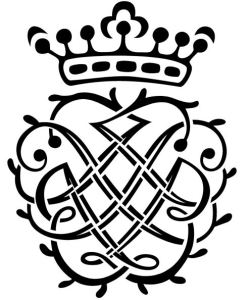Hitchcock: The Lodger
with live improvised organ accompaniment by David Briggs
Royal Festival Hall. 24 June 2017
The history of improvisation on the organ is almost as old as the history of the organ itself. From medieval times to the present day, the ability to compose at will has been an essential part of an organists skills, whether adding a simple counter melody to a plainchant to improvising a complete symphony. Although the tradition is not as strong in the UK as it is in, for example, France, recent decades have seen a UK revival in the art of composing at sight. On this occasion, it was a specific branch of improvising that was on display, that of accompanying a silent film. There are many organists, past and present, who specialise in the cinema organ genre, but this performance was given by a classical organist, David Briggs, formerly organist at three cathedrals, and now best known for his organ transcriptions of symphonies by Mahler et al, as well as for his film accompaniments.
David Briggs is very capable of improvising a symphony, but the skill required for film accompaniment is very different, not least by the fact that, as was explained during the pre-event talk, the accompanist needs to have a detailed knowledge of the film. I imagine that cinema organists in the days of silent films didn’t have the chance to get to know the films as well as we can today, so their improvisational skills were perhaps different. Although Briggs has improvised to some of the better-known Hitchcock films, this was only his third performance with The Lodger. As such, there was presumably a reduced risk of lapsing into repetition of past improvisations which, of course, goes against the grain of the improvisor’s art. That said, Brigg’s use of 12 predetermined themes, related both to characters and to settings, upon which to build his 90-minute musical tour de force suggested a degree of pre-preparation that would not usually be available to an organist improvising, for example, on a previously unseen theme for a competition or a recital.
His choice of predetermined themes also underlies my only really concern about David Brigg’s musical interpretation of Hitchcock’s complex film – his use of comedy, deliberate or accidental, for what is in essentially a pretty tense thriller. By far the most predominant theme was Kurt Weill’s Mack the Knife (Die Moritat von Mackie Messer) from The Threepenny Opera (Die Dreigroschenoper), first performed in 1928, a year after The Lodger was first released. Indeed, with some radical pruning, David Brigg’s extempore composition could easily be turned into a Theme and Variations on Mack the Knife. Other themes and quotations included the Pink Panther theme, Daisy, Daisy, give me your answer do, the ‘Hovis’ music from the New World Symphony, Tea for two, If you love me, If I were a Rich Man, I’m forever blowing bubbles, some Scott Joplin and Tristan & Isolde. Each theme was related to a specific film scene or occurrence, most quickly becoming blindingly obvious within the context. Hence my concern that the mood of Hitchcock’s film was rather undermined.
The composer and musical influences and references usually reflected David Briggs’ own interest in the French romantics and symphonic organ tradition, with pretty obvious references to Debussy, Vierne, Dupre, Alain, Messiaen, Liszt, Reubke, Mahler, Wagner, and even a short burst, if that is the right word, of Howells. Only on two short occasions was there any hint of the cinema organ style, both accompanying dance sequences. The rapid pace of much of the action made musical development difficult. For example, on one occasion there was an instant cut from a man falling off a ladder to a cuckoo clock. There were only two periods where the flow of the action allowed Briggs to develop any real sense of symphonic development without responding to minor film details, including a dramatic and well-handlied built up of tension, and volume, towards the end of the film.
The RFH set up was a large central screen blocking any view of the organ itself, behind which sat Briggs at the console, which was projected onto two slightly smaller screen either side of the film. During the introductory talk, we were promised shots of his feet and from above the console, but the screens remained static throughout, filming from left and right on the keyboards. The lack of any pedal filming meant that some pretty virtuosic footwork was missed. Although probably of interest to organists, in spotting what Briggs was up to and trying to work out the registrations and the little switches that change manual divisions – and to non-organists who wonder what an organist actually does, the duel console filming soon became something of a distraction.
One outstanding feature was David Briggs’ use and control of the Royal Festival Hall organ. He resisted any attempt to unleash the full power of the beast until the climactic conclusion, and kept an impressive sense of light and shade throughout. However, light was a bit of an issue in the hall, as the albeit dimmed, but still noticeably present house lights reduced the clarity of the film. Incidentally, the venue of the Royal Festival Hall was appropriate, as all the murders of young blonde women depicted in the film took place just over the river, around the Embankment and Charing Cross area.
